Club Roxy is an unforgettable multicultural center on the Prague map and a cornerstone of Czech and also European alternative culture.
Together with NoD, they’ll celebrate their 27th anniversary under the name BE27 until October 26. Both venues will be traditionally presented as one, reminding one of the rich histories and also introducing the new attitude and visage.
Tonight (Wednesday 23) you can enjoy one of the most pioneering electronic bands of the past fifty years, Tangerine Dream. For this performance, they will reference some of the most popular tracks from their extensive career as well as playing music from their 2017 album Quantum Gate.
You’ll find the full schedule below.
– – – –
We 23. 10. – BE27: Tangerine Dream (DE)
Info here
Th 24.10. – BE27: Manon Meurt / Luvver
Info here
Fr 25. 10. – BE27: Skepta (UK) | Fórum Karlín
Info here
Fr 25. 10. – BE27: Rebekah (UK)
Info here
Sat 26. 10. – BE27: Black Sun Empire (NL)
Info here
By 2035, Prague Airport should increase its capacity up to 23 million passengers per year.
This year it handles 17.7 million people, which is a year-on-year increase of 5.8%, although it is already facing capacity problems. According to Václav Řehoř, Chairman of the Czech Aeroholding Board of Director, ten per cent of the arrivals at Terminal 1 had to be declined this summer. Passenger numbers are growing continuously since 2013.
The requirements to increase the airport capacity are the construction of a parallel runway, the centralization of security controls and building new boarding sections D and E. Section D should be built at Terminal 2 by 2029 and section E by 2036.
Along with completing the parallel runway, it will be necessary to shut down the existing secondary runway. After the launch of the new track in about eight years, it is expected that night operations at the airport will be cancelled. The runway will only be used for take-offs. Upon commissioning, the airport’s capacity will increase to 250,000 per year.
The Minister of Transport, Vladimír Kremlík (ANO) added that by 2028, an electrified double-track railway line should lead to the airport and Kladno. It is planned to build several elevated junctions on the Prague ring road and the roads leading to the airport.
The journey from the centre of Prague to Václav Havel Airport in Ruzyně should take 25 minutes along the planned railway line. From the railway for nearly 40 billion crowns, which will also lead to Kladno, only part of the Negrelli viaduct is being elaborated.
The adjustment of the monorail and non-electrified line to Kladno with an annexe to Prague Airport has been under construction for years. The new connection should allow a ten-minute interval of trains going to the airport and Kladno.
Prague is the second-fastest-growing city in the EU, according to the latest report prepared by Skanska, Colliers International, and Dentons, describing the development of important cities in the CEE region.
The list created by the authors has been set up based on several criteria – GDP per capita, human resources, and city connectivity judged by the number of passengers on the local airports.
According to the report, the region will further retain its growth. A favorable economic situation and good results in the big cities namely fuel the demand for new investments including those from Asia.
The report points out that Prague outgrew London and Berlin more than twice in the number of restaurants. In the framework of the whole region, Prague resembles most the Western cities by the structure of its local economy, the high amount of professional services, arts and entertainment.
The Czech capital attracts also by its educated labour force, which exceeds the European average and it is comparable with Paris or Madrid. Also thanks to that the locally crucial investments flow into segments such as research, development or engineering. Most of the employees here work in retail, professional services or public administration. So, the office space in the city itself occupies 3.5 million square meters.
In the report, the authors paid great attention to the real estate market. Last year’s commercial real estate investment volume across the CEE region reached approximately €13.2 billion, with over €5 billion deployed in the office market.
The stock of office space in the local important cities has grown in the past few years and it now totals 21.8 million sqm in big cities throughout the entire CEE region. Forecasted completion by 2021 will increase this number by a further 20% – to 26.5 million sqm.
One of the most important trends covered by the new CEE Investment Report is that the strong development of the office market has attracted an unprecedented inflow of overseas capital, ranging from South Africa to Asia.
“In our eyes, Prague has a huge potential and we are pleased that more and more foreign investors, share this view with us,” said Alexandra Tomášková, Director of Skanska Property Czech Republic.
According to the 2019 CEE Investment Report, Asian investors, especially the ones from South Korean, are currently the most active foreign investors in CEE, and they are playing an increasingly important role in the commercial real estate market.
The full version of the CEE Investment Report 2019 Thriving Metropolitan Cities including information about particular cities in the region and investment opportunities is available for download here.
The doors of Vinohradský Parlament in Korunní Street have reopened after extensive reconstruction, under the direction of the chef Jan Pípal and the general manager Robert Vaverka. “We’ve been in Prague for six years, always busy. That’s the reason we thought it was essential to give something new to our customers. When you have a good business, you must make something new every six or seven years,” remarks Vaverka.
Vinohradský Parlament is not a typical Czech restaurant, even though you can find traditional and authentic dishes on the menu. They exclusively cook Czech cuisine with modern trends an original adjustments, using products and seasonal ingredients from suppliers they regularly visit, emphasizing the quality of each meal at reasonable prices. They also take care of their beer, always with the perfect temperature thanks to a unique way of cooling.
The new interior of the restaurant blends in perfectly with the style of the National House in Vinohrady, where it’s located. The design features a white ceiling with sculpted animals and a distinctly coloured carpet on the first floor. The capacity of the establishment after the reconstruction is 350 seats.
Eight freshly cooked dishes await you as part of their lunch menu, along with a soup and dessert from Lukáš Skála. From 10:45 a.m. to 3:00 p.m. you get to try something different every day.
The restaurant has remained faithful to the Czech tradition, and a wide range of dumplings now complement their meals. They are prepared from different types of flour, and their processing is different, fried, filled or steamed.
Every day the restaurant offers four kinds of dumplings that change weekly and also two sweet varieties. With the open kitchen, customers get to see the process and laboriousness behind their elaboration. “Dumplings are a Czech speciality and have a long history. We are the only ones that focus on knedlíky as the main meal, we even have a part of the kitchen specialised in this,” added Vaverka. The emphasis on dumplings is also an effort to differentiate from other traditional Czech restaurants mainly because knedlíky is a reasonably tricky but often undervalued discipline.
Guests can enjoy leavened dumplings stuffed with beef cheeks and paprika sauce, potato dumplings with goose confit or dumplings with spinach and chanterelles on cream among others.
Customers can also choose the dumplings option, ‘Eat as many as you can’. For 269 crowns you’ll get 200 grams of slowly cooked meat with a sauce of your choice and an unlimited number of dumplings.
Evening specialities are available until sold out, every Thursday from 6.00 p.m. they prepare for you half grilled chicken, and every Friday from 6:00 p.m. roasted beef.
The offer of beer has also changed because of the long-standing wish of customers. Instead of Staropramen, the owners decided to tap Pilsner. “When we decided to change the restaurant, we also chose to change the beer,” adds Vaverka.
Besides their permanent menu and Czech seasonal specialities, they are proud of their homemade lemonade, prepared with fresh fruit and available with a drop of alcohol.
At Vinohradský Parlament you’ll feel comfortable whether if coming for lunch, dinner or just a few beers with friends, experiencing friendly service, pleasant atmosphere and fabulous food.
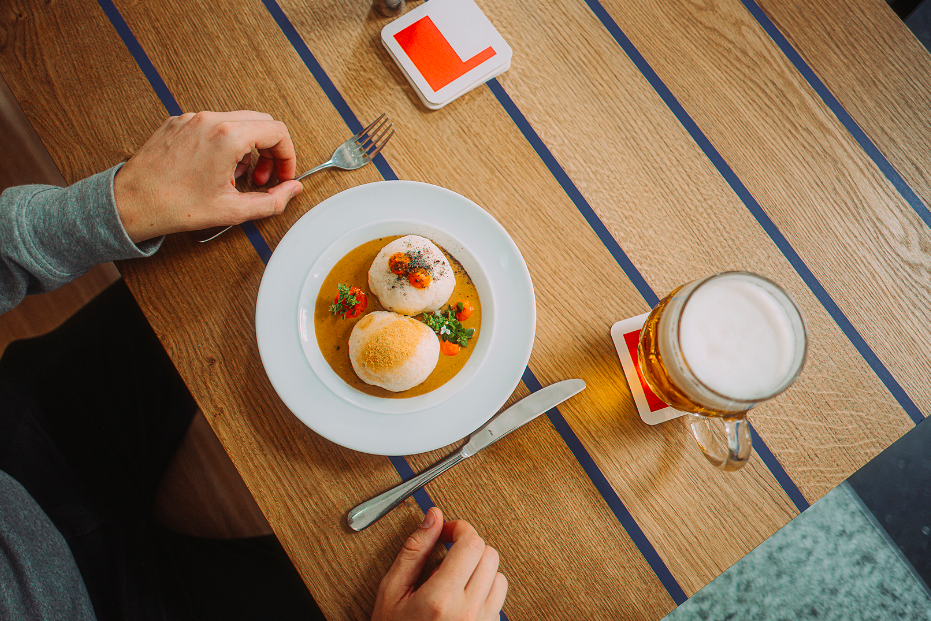
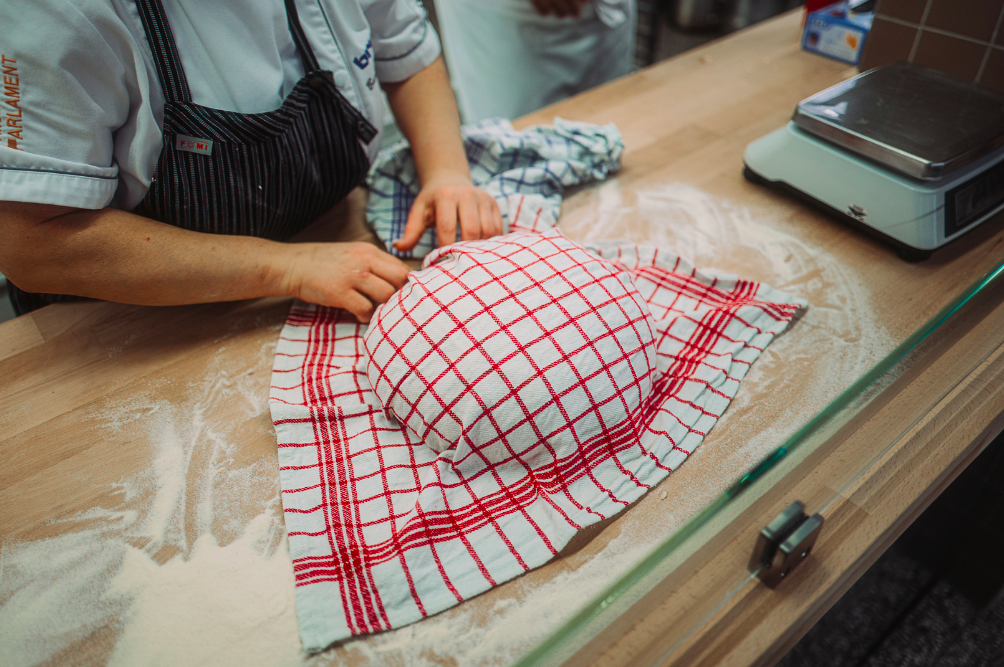

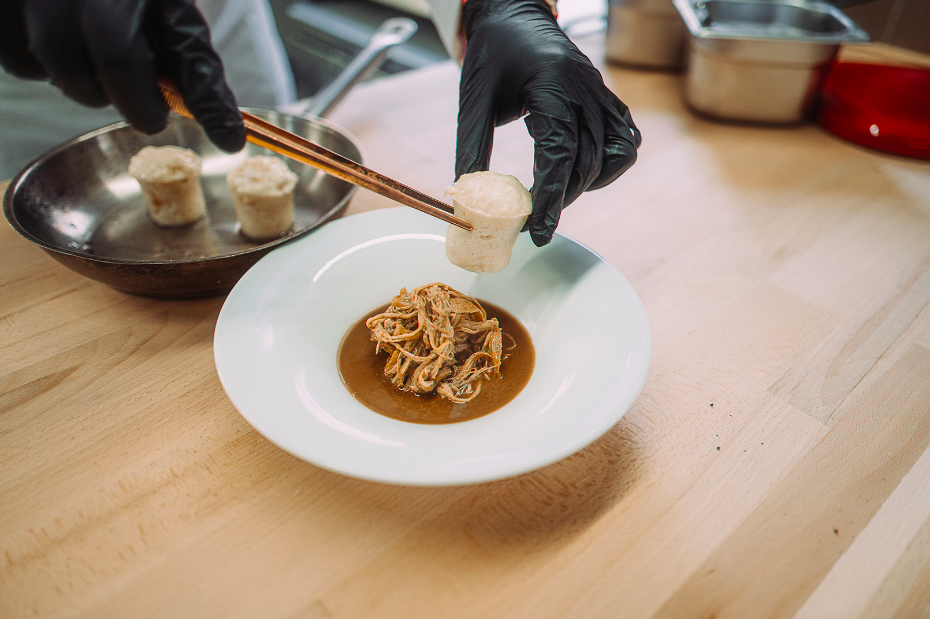
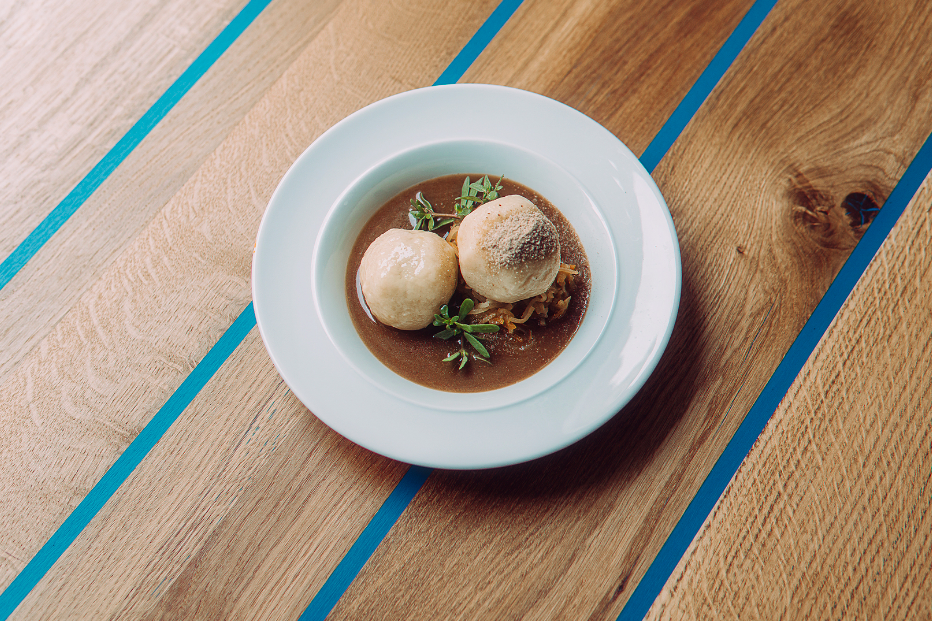
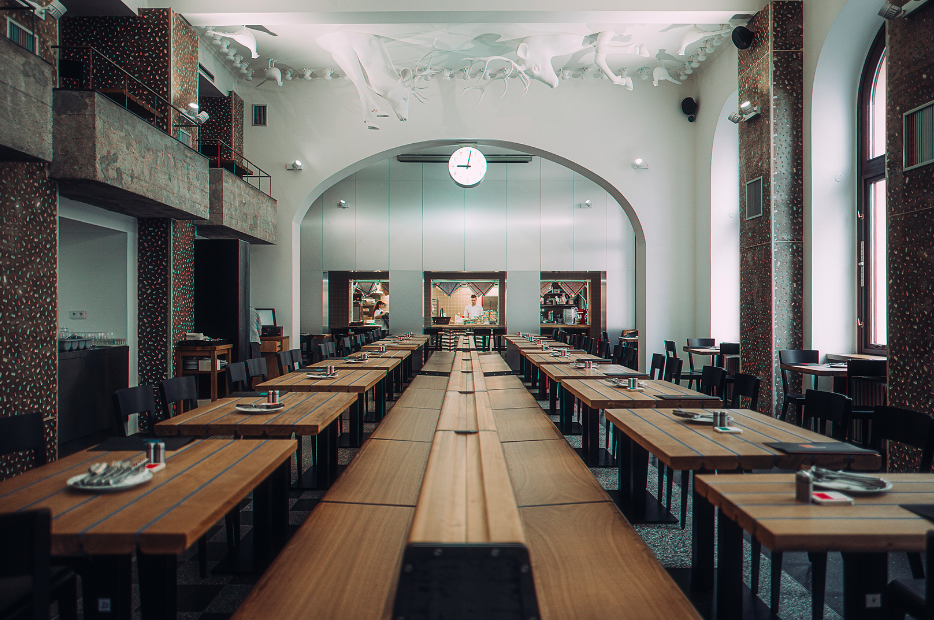
Cozy igloos and mulled wine in porcelain cups create a cool but warm fall and winter vibe at Prague’s Manifesto Markets
Manifesto Markets in Smichov and Florenc dressed up in fall styling offer a comfortable all-weather experience through the end of the year: visitors can once again book popular cozy transparent igloos – seven of them were raised at Florenc and six are available at Smichov.
Newly this fall, Czech-made porcelain cups with Manifesto’s iconic design will replace single-use cups for enjoying hot wine and drinks in the warm glow from heaters while tasting new specialties and menus composed to warm us up.
“This is one of my favorite times of year. We invest so much love into making Manifesto a completely different, and warm experience before the holidays. Manifesto, at its core, is about bringing people together. What better way to see your friends and family than with the warm glow of gas fires and heaters under our new roofs? We have something for everyone. Grab some hot chocolate, mulled wine, specialty hot cocktails served in our Czech-made porcelain holiday mugs. You’ll find new interior designs for our cozy igloos at both Manifesto Smichov and Florenc. We are offering really special outdoor holiday activities so you don’t have to go to the mountains to have winter fun. We’ve created a unique environment to enjoy fresh air in the city,” explains Martin Barry, founder of the food and culture market drawing on his experience of designing year-round public spaces in Canada and other cold-weather countries.
The food selection will be enriched by two French cuisine concepts joining the market – Le Petit Bouillon and L’Atelier Charlie Voston, while all the restaurants will change up their menus – Zatisi is offering creamy soups and toasts with pulled duck and cabbage, The Craft created a brand new brunch menu and PokeHaus will offer churros.
Children and grown-ups alike can enjoy Halloween with our first karaoke party as well as Dia de los Muertos with a mariachi band. With the Velvet Party, Manifesto will celebrate the 30th anniversary of freedom and the right to choose – values deeply present in its DNA. Founded by an American, Manifesto became an incubator to support young, independent entrepreneurs and a living melting pot of diversity – all of those aspects were unthinkable before the Velvet revolution. Finally, on November 20th, the stylish and elegant Manifesto Winter Market will kick off at both locations, with a special program.
At both markets, heated domes – igloos – can be booked on GoOut. Newly this season, you can wrap yourself in brand new Manifesto blankets.
On the culture side, Manifesto Smichov will present live music and DJs on Thursdays, Fridays, and Saturdays and Manifesto Florenc will continue to host Friday Nightmarket with live music, on top of special highlights of the Fall season. Events line-up is available at the new website
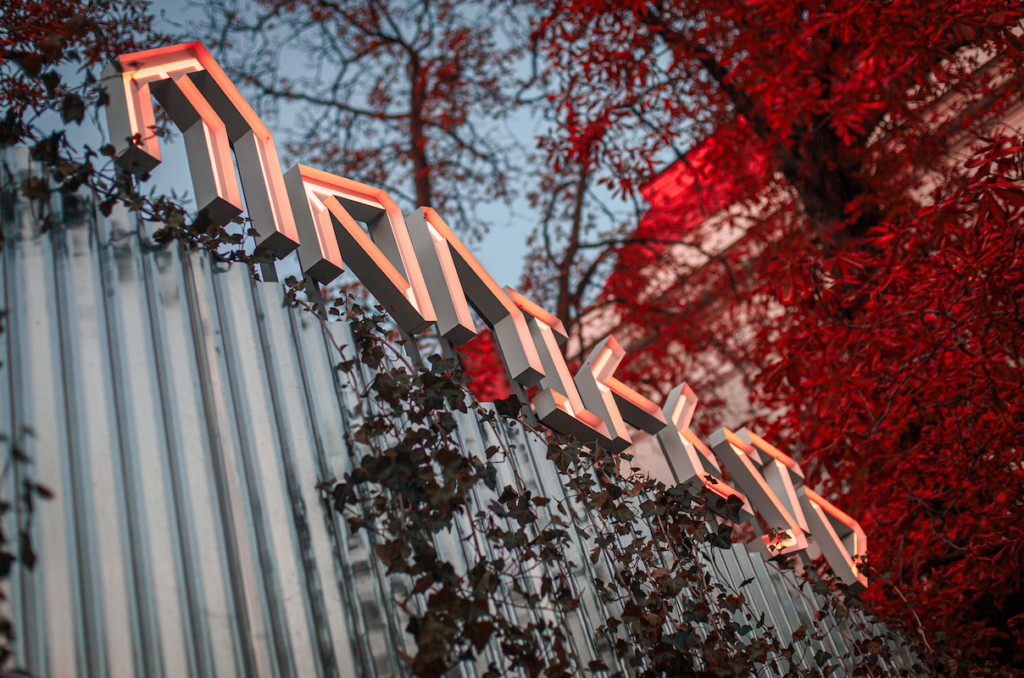
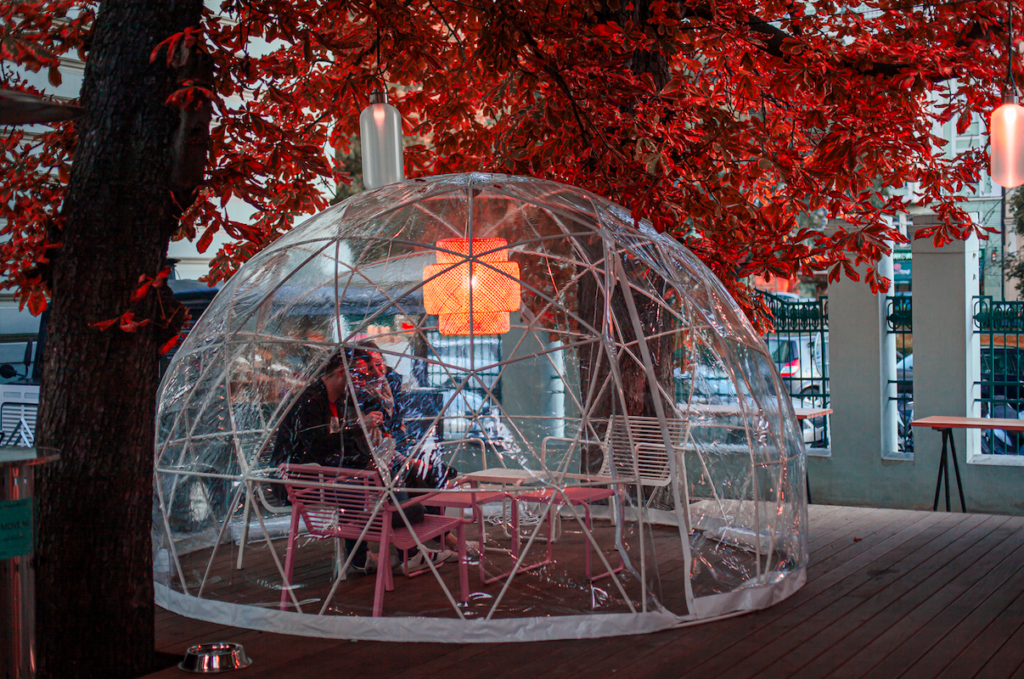
Prague 1 Town Hall would like to prevent entrepreneurs of restaurant gardens in the city centre from being able to keep them open late at night.
The owners of about thirty restaurants in the centre united forces and founded an association to prevent it.
According to the spokesperson, the city hall wants to support night peace in the city centre. “We want Prague to be at the level of other European cities, standing on the side of residents. Currently, we are dealing with gardens in Prague 1 that close after the time adjusted, at eleven, midnight or even at two in the morning.”
The Association of employees and operators of hospitality POHO resists reducing the opening hours of the gardens. It was created last week and had over thirty businesses with around 1,200 employees enrolling in just a few days.
“Under the pretext of protecting night peace, 300 businesses with gardens are under threat. It would be a significant intervention in the economy of business, with a negative impact on employees,” said the chairman of the association, Petr Bauer. According to him, restaurants with gardens make about 300 million crowns a year.
At the beginning of October, the Association asked all representatives and the Prague City Hall management to reject the Prague 1 proposal. It has not been decided yet. In addition to reducing comfort for tourists having dinner as the main meal of the day, businesses also point out they have higher garden fees compared to other European cities, one of the highest in Europe.
“The only thing we will achieve reducing the operating time by two hours is that before ten o’clock our guests will have to leave the gardens in Prague 1 and therefore go looking for a place in the neighbouring city districts. No one will benefit,” Bauer continued.
“In western cities, it is common for historical squares to be open after ten o’clock in the evening. Banning gardens in the centre of Prague after ten o’clock does not solve the problem, only redirects it to the surrounding city districts, where noisy tourists will move. The safety and noise problem should be solved with the City Police as a priority and not with the regulation of legal business,” said Jiří Pospíšil, current chairman of the centre-right TOP 09 party.
The establishment of the Association of employees and operators of hospitality POHO is welcomed by the Deputy Mayor of Prague 1, Petr Hejma, who is ready for negotiations. “As the deputy mayor of Prague 1, whose responsibility is to promote entrepreneurship, I assure entrepreneurs and businesses that we are not preparing any sanctions and measures that would discriminate against responsible and thoughtfully functioning establishments. On the other hand, I would like to point out that establishments with front gardens that do not strictly observe their obligations and required regulations will be severely penalized,” said Hejma.
According to the Prague 1 Chamber of Commerce, the current attitude of self-government and state administration is not sufficiently transparent and equal to all entrepreneurs.
“Those who abide by the rules deserve respect and a stable business environment without surprises, incomprehensible and unexplained decisions. If someone does not follow the rules, let them be sanctioned,” said the chairman of the Chamber, Vladimír Krištof.
Most restaurant front gardens in the metropolis are in Prague 1. To operate the front yards, entrepreneurs must obtain a permit from the district, and they must also rent an area from the metropolis.
Four years ago, raised wooden floors had to disappear from the front gardens. It was also prohibited to install TV screens, something very popular, especially for watching sports.
Alternative rock once ruled the music halls and radio-waves, but that was ages (certainly decades) ago.
Among the most influential groups in alt/indie rock, Sonic Youth ended as a band in 2011, and it was a tabloid affair for indie rockers’ media sphere, since they had been the foremost alt-rock band in the States for two decades, led by Thurston Moore and his wife Kim Gordon with Lee Renaldo since 1981.
However, Thurston Moore has had his own group since then carrying on the torch as a sonic rocker and experimenter continually expanding his horizons, but not at all with the attitude of “no looking back.”
His current tour is for their most recent album “Spirit Council” an artistic tour de force in his wide discography. It is a collection of three exceptionally-long instrumental compositions recorded between 2018-19 representing a period of his life reflecting on spiritual matters, collective musical friendships, and overall, a meditative sonic exploration—a deeply reflective effort both compelling and explosive.
Just as Bob Dylan dissected his failed relationship in one of his best albums “Blood on the Tracks,” Moore’s “Spirit Council” could be acknowledged as a similar gesture, but in epic instrumental tracks. After all, Sonic Youth broke up due to the separation of Moore and Gordon, both co-founders and soul mates after a long relationship that began with their rise from the New York scene in the early 80s.
They rose from the punk scene but then forged an alternative/indie rock sound like no other. When the punk zeitgeist in America suddenly ended with Nirvana’s leader Kurt Cobain’s suicide in 1994, Sonic Youth rose to the occasion as the new leaders of a post-punk, alternative rock sound merging the 80s with the 90s, punk in spirit, but at the core a visionary guitar rock group without gimmicks.
Most distinctive for their high-velocity guitar assaults alternated with a punk-pop growl, their later recordings also became most influential to the best-known post-rock groups around including Mogwai, Sigur Ros, and Godspeed You! Black Emperor. Especially in their later live shows with songs like “Hits of Sunshine (for Allen Ginsberg),” etc. they explored improv-jams midway in sets like the Grateful Dead. Yet Sonic Youth seems to be hardly known to younger rock music fans and too bad.
Thurston Moore’s group on this tour includes Debbie Googe, the bassist of the legendary My Bloody Valentine, Sonic Youth’s drummer Steve Shelley, and the English guitarist James Sedwards. This same line-up last played Prague’s Lucerna Music Bar touring their debut album “The Best Day” in 2014.
While Sonic Youth’s first concert ever in Prague was a sold-out event in the early 90s, in the Grand Lucerna Ballroom in 1993, headlining a tour with Pavement and Sebadoh. The last performance of Sonic Youth in Prague was another sold-out event, but this time at the smaller Divadlo Archa in 2007.
Tickets here
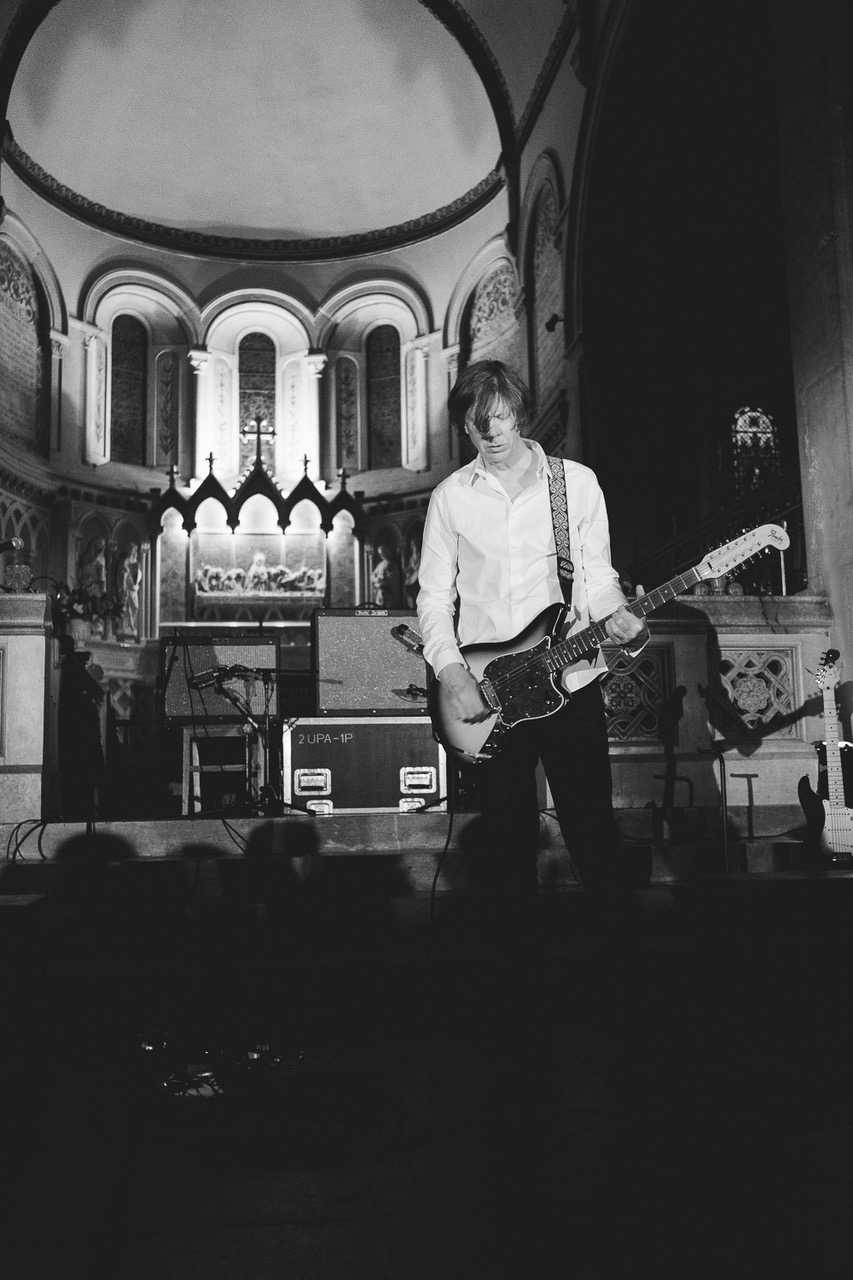
As of Sunday, 27 October 2019, the winter flight schedule becomes effective. It will provide flights from Václav Havel Airport Prague to 121 destinations in 46 countries. New additions will include Lviv, Kharkiv, Chisinau, Florence, Beirut, Nur-Sultan and Keflavik. Altogether, Prague Airport will fly to fifteen new destinations during the winter season.
There will be 60 direct flights from Prague during the winter flight schedule, 13 of them are low-cost.
New destinations include Lviv, Kharkiv, Chisinau, Casablanca, Perm, Florence, Nur-Sultan, Stockholm – Skavsta, Bournemouth, Billund, Beirut, Keflavik, Malta, Odesa, and Venice – Treviso. This year, four airlines will newly operate their flights from Prague also in winter, including SCAT Airlines, SkyUp Airlines, Air Malta and Arkia Airlines.
“Czech passengers will benefit from these new opportunities for traveling abroad. In addition to new destinations in Eastern Europe, they can fly to places where Prague Airport traditionally has direct flights only in summer, such as Iceland or Malta,” says Václav Řehoř, the Chairman of the Prague Airport Board.
The busiest country with regard to the number of destinations, even in winter, is the UK, where 17 different destinations are offered, including all major international London airports, which are serviced by direct flights from Prague. The second busiest country is Italy (11 destinations), followed by Russia (10 destinations), Spain (9 destinations) and France (8 destinations).
Most flights in winter will fly to London (up to 93 flights per week, Moscow (up to 70 flights per week), Amsterdam (up to 51 flights per week), and Warsaw (49 per week).
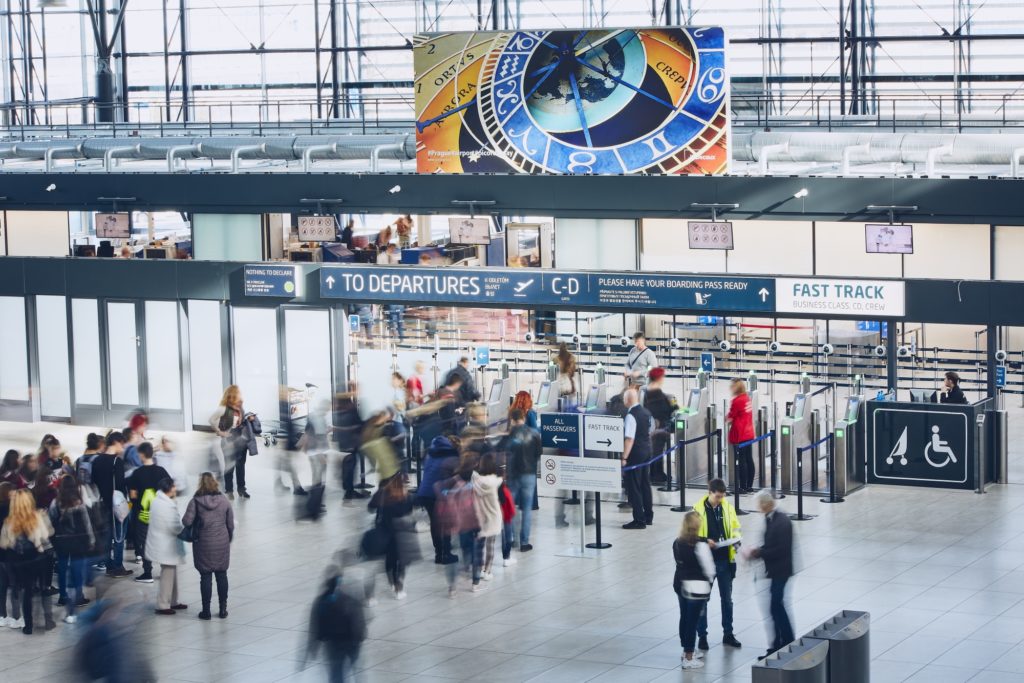
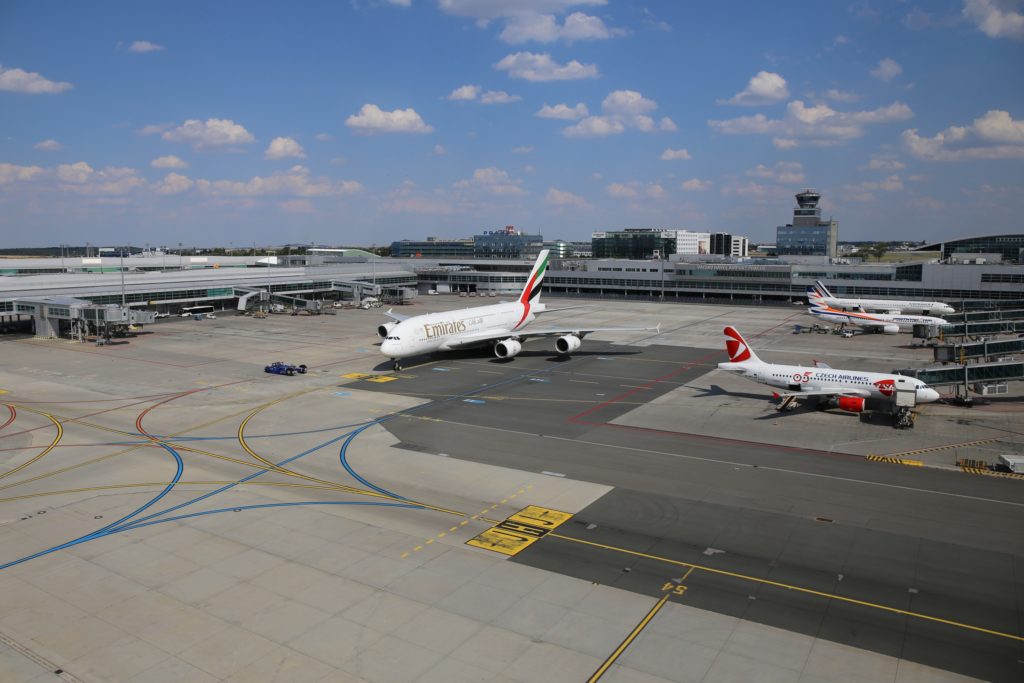
The Czech side were happy to joke at their own expense on social media.
Slavia Praha takes on another of European football’s heavyweights on Matchday 3, which brings the first-ever meeting against Barcelona.
Now, the Twitter account of Slavia changes the bio as “The club next to Barcelona in MD3 & MD4 Champions League schedule”.
Slavia is currently sandwiched between second-placed Barcelona and fourth-placed Inter Milan in Group F but could climb to the top of the table with an unlikely victory over Ernesto Valverde’s juggernaut on Wednesday evening.
They come up against the likes of Lionel Messi, Luis Suarez and Antoine Griezmann on Wednesday night, with Valverde likely to pick a full-strength team after the postponement of this weekend’s El Clasico against Real Madrid.
Slavia knows they are up against it this midweek, but did not let the size of the challenge that awaits them ruin their sense of humour.
Ahead of Wednesday night’s fixture, the Czech side changed the Twitter bio of their English account to read: “The club next to @FCBarcelona in MD3 and MD4 @ChampionsLeague schedule.”
And the official Barcelona account posted a screenshot of the bio, replying; “10/10 bio. See you Wednesday, @slavia_eng.”
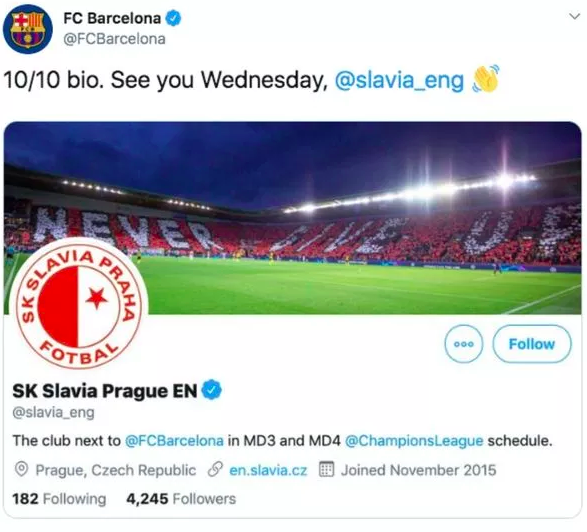
Thanks, that we can – This is the message we want to spread on the 17th of November on Národní street, where things started to move thirty years ago. Thanks to the Velvet Revolution on 17th November 1989, we now live in a free and democratic society. Playfully but also with dignity, we pay tribute to the actors of the revolution and celebrate the achieved goals and opportunities that were given to us. We want to actively show and demonstrate how we really benefit from the gained freedom – in arts, civic life, public space. Come to celebrate and enjoy this day with us!
What do we do?
Korzo Národní
Korzo Národní is the biggest and longest continually organized celebration of the Struggle for Freedom and Democracy Day in Prague. Since 2014, it takes place on Národní street, where a massive student demonstration started the Velvet Revolution on the 17th of November 1989, which subsequently led to the fall of the communist regime.
The festival program consists of various artistic performances on the street, such as music concerts, theater performances for children and adults, photography exhibitions, educational events, authors‘ readings, representation of NGOs and much more. All events run from 10 am to 10 pm and are followed by an afterparty in the music club Rock Café. This year will perform David Koller, Aneta Langerová, Tata Bojs, Prago Union, Dagmar Pecková, Michael Kocáb, Dagmar Havlová, Václav Marhoul and more. The highlight of the program will be the lighting installation and projection called Memory of the nation: 1989 (produced in cooperation with Post Bellum nad 3dsense).
Velvet Parade
Let’s walk along the route of the student manifestation which triggered the events of the Velvet Revolution exactly 30 years ago! On 17th November we will reconstruct the student parade from Albertov to Národní St. Everybody can join us. Along the way, you will experience the atmosphere and learn what and where happened on that fateful day.
Art for Freedom! Student Exhibition
Forty students from different schools and faculties entered the competition called 30 Years of Freedom in Art. The winning student work of Dana Vojtíška, Sofia Makanová, Lucie Michnová, Kateřina Kuchtová, Dana Kinská, Jakub Ra, Jana Kvíza, Martina Kyjovská, and Jana Hladíková is displayed on advertising spaces at one of the most frequented streets of Prague and Václav Havel Airport.
Lightened monuments all around Europe
Let’s create the biggest joint celebration of freedom in Europe together. By lighting up one of the symbolic buildings of your city with a tricolor or a flag of celebrating country, in the days of specific anniversaries. We had already celebrated the anniversary of freedom in Poland, Lithuania, Latvia, and Estonia in this way. Look at photo reports and join us for the next action (Hungary 23th October, Germany 9th November, Bulgaria 10th November, Czechia, and Slovakia 17th November and 16th December in Romania).
The painting by Oskar Kokoschka from 1934 entitled Prague – View from the Monastery of the Knights of the Cross with a Red Star was sold setting a record price of 68.25 million crowns at yesterday’s auction in Prague.
His new owner will pay almost CZK 78.5 million, as he will receive a 15% auction tax.

According to Aleny Havlíkové from the Adolf Loos Apartment and Gallery auction house, this is a new Czech auction record.
The world-famous Austrian painter, whose ancestors came from Prague goldsmiths, painted it after his arrival in Prague in the late summer of 1934. This masterpiece belongs to the series of his Prague landscapes.
In October 1934 the painting was exhibited in Mánes, so after 75 years the work returned to the famous exhibition hall.
Kokoschka painted from various locations in Prague such as the Strahov Monastery, the Kramář Villa Garden or both banks of the Vltava River. His paintings are part of the most important collections in the Czech Republic and abroad.
“Kokoschka’s oil painting Prague – View from the Monastery of the Knights of the Cross with a Red Star, together with Prague – Charles Bridge, owned by the National Gallery in Prague, and Prague – Hradčany and Petřín, are among its three most important scenery in Prague,” says the auction house.
Kokoschka chose a small balcony in the Convent of Old Town for his work, and from there he painted for almost three weeks.
The previous record of Czech auctions belonged to František Kupka, the pioneer of abstract art. On May, his masterpiece was sold for 65 million crowns, and with a 20% tax, the buyer paid 78 million.
Autumn? No, thanks.
Temperatures in the Czech Republic could rise to 22 degrees Celsius this week, and until mid-November, the temperature will be above the average.
Precipitation will be slightly less than usual in this period. It should rain mostly during the week of the 28th of October.
This week should be the hottest. Minimum night temperatures will usually be around nine degrees, and the maximum daily temperatures will generally be between 17 and 22 degrees.
“The coldest week is likely to be from the 4th to the 10th of November with the lowest night temperatures around two degrees and a weekly average during the day of around nine degrees,” said meteorologists.
The long-term average temperature in the Czech Republic between the 21st of October and the 17th of November is 5.2 degrees. The coldest year was 1965 when the average temperature fell to two degrees and the warmest in 2013 when it exceeded eight degrees.
